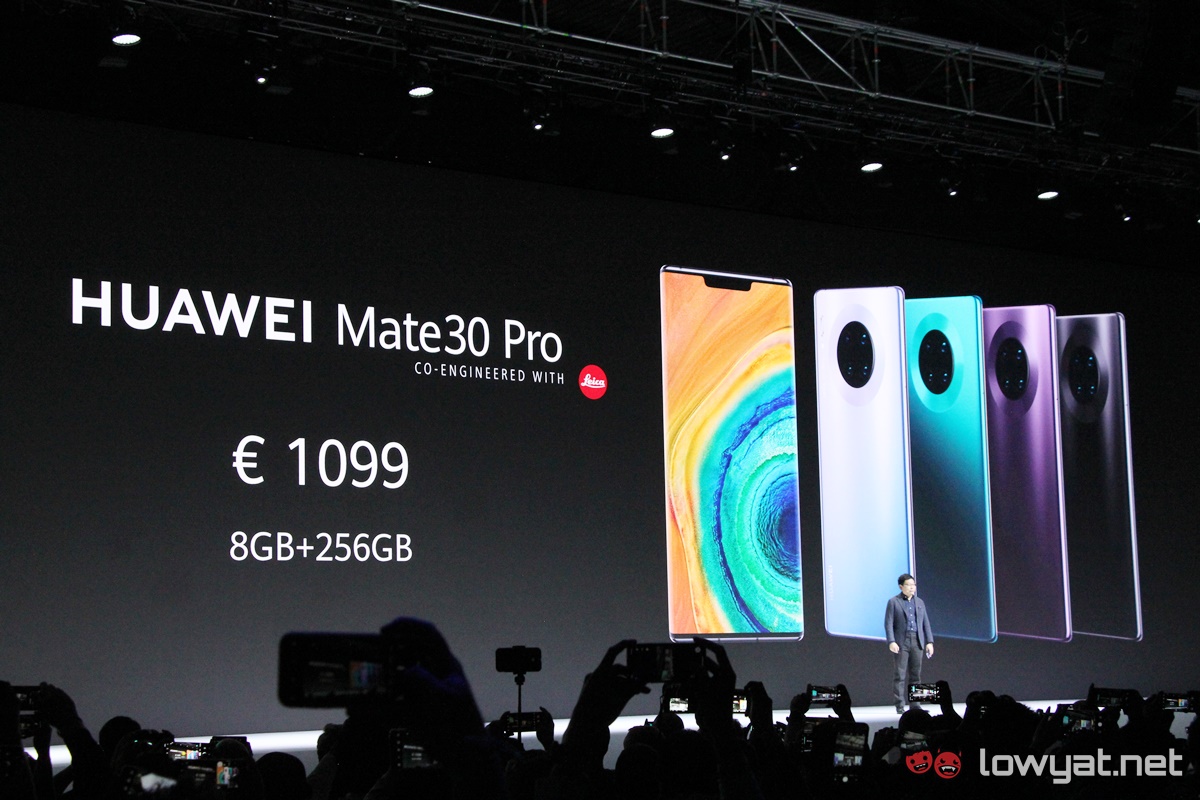The US government’s executive order has undoubtedly affected Huawei in more ways than one. With no legitimate access to Google Mobile Services (GMS) and US companies barred from doing with them, the Mate 30 series became the first casualty of the ongoing trade war. Not only that, it’s only been brought to light that both the Mate 30 and Mate 30 Pro are actually free of US-made components.
The revelation of the US-free Mate 30 series was reported by the Wall Street Journal, followed later by Sally Shin, Bureau Chief at CNBC. Specifically, the breakdown was conducted by UBS and Japan-based firm Fomalhaut Techno Solutions.
The breakdown of the Mate 30 series showed that after the US signed the executive order against Huawei, the latter began searching for other sources to build its new flagships. The audio amplifiers within the two Mate 30 models now come from NXP, a Dutch company. Both its Wi-Fi and and Bluetooth module are from Huawei’s own HiSilicon instead of Broadcom, while the remaining components are either provided by Murata or MediaTek. More importantly, Huawei also told WSJ that all of its 5G hardware is now “America Free”.
New Huawei Mate 30 used zero US suppliers, teardown analysis shows
Intel
Broadcom
Qualcomm
Qorvo
Skyworks
Cirrus Logicall provide parts to Huawei https://t.co/09LxQAcxmR
— Sally Shin (@sallyshin) December 2, 2019
Despite the ban on it, Huawei has said that it would like to continue using US-made components, instead of resorting to what amounts to scrounging for parts from other non-US firms. Or having to build its own components. As it stands, the US’s Trump administration is preparing to sign a “phase one” trade deal with China, allowing the trade of “non-sensitive” equipment between the two superpowers.
Both the Huawei Mate 30 and Mate 30 Pro have proven to be extremely capable flagship devices, with the latter’s camera having been ranked as one of the best on the current market. Sadly, the lack of GMS in the phones have made them very hard sells, especially to a smartphone market governed either by Android or Apple’s iOS.
(Source: Techspot, Gizmodo Australia)
Follow us on Instagram, Facebook, Twitter or Telegram for more updates and breaking news.


